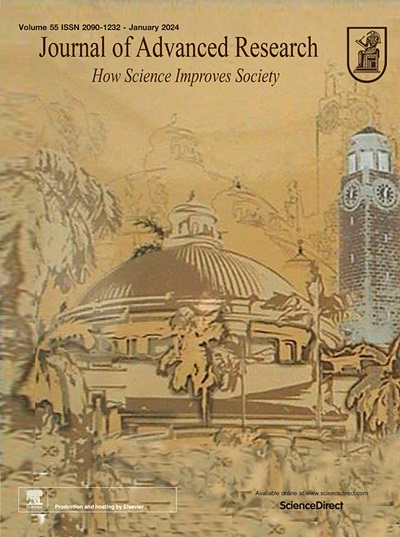蝶呤通过影响YY1/HDAC1/TOP1/IL-6信号传导,介导睡眠剥夺诱导的小胶质细胞活化,导致神经元损伤。
IF 13
1区 综合性期刊
Q1 MULTIDISCIPLINARY SCIENCES
引用次数: 0
摘要
简介睡眠不足(SD)是现代社会的一种常见疾病。海马区是大脑中负责学习、记忆和情绪的重要区域。海马功能障碍可导致严重的学习和记忆障碍,严重影响生活质量。SD 伴随着海马小胶质细胞的激活和炎症因子的激增,但其确切机制仍不清楚。此外,SD 中活化的小胶质细胞如何导致神经元损伤也一直是个未知数。拓扑异构酶 1(TOP1)在包括肿瘤系统和病毒感染在内的炎症过程中发挥着至关重要的作用。在本研究中,我们观察到 SD 小鼠海马中的 TOP1 水平显著升高。因此,我们推测 TOP1 可能与 SD 诱导的小胶质细胞活化和神经元损伤有关:研究 TOP1 在 SD 诱导的小胶质细胞活化、神经元损伤和神经行为障碍中的作用,以及 SD 诱导的 TOP1 水平升高的分子基础:方法:利用特异性小胶质细胞 TOP1 基因敲除小鼠研究 TOP1 对小胶质细胞活化和神经元损伤的影响。通过转录因子预测、RNA干扰、ChIP-qPCR、ChIP-seq数据库分析和荧光素酶报告实验来探索YY1转录激活的分子机制。非靶向代谢分析被用来研究YY1转录激活的物质基础:结果:在海马小胶质细胞中敲除 TOP1 能改善 SD 诱导的小胶质细胞活化、炎症反应和神经元损伤。从机理上讲,TOP1介导小胶质细胞释放IL-6,从而导致神经元功能障碍。此外,SD导致的TOP1升高与新蝶呤有关,这是因为新蝶呤通过破坏YY1和HDAC1的结合促进了TOP1启动子区域H3K27ac水平的升高:本研究揭示了TOP1介导的小胶质细胞活化对SD诱导的海马神经元损伤和行为障碍至关重要。本文章由计算机程序翻译,如有差异,请以英文原文为准。

Neopterin mediates sleep deprivation-induced microglial activation resulting in neuronal damage by affecting YY1/HDAC1/TOP1/IL-6 signaling
Introduction
Sleep deprivation (SD) is a common disorder in modern society. Hippocampus is an important region of the brain for learning, memory, and emotions. Dysfunction of hippocampus can lead to severe learning and memory disorder, significantly affecting quality of life. SD is accompanied by hippocampal microglia activation and a surge in inflammatory factors, but the precise mechanism remains unclear. Moreover, the ongoing unknown persists regarding how activated microglia in SD lead to neuronal damage. Topoisomerase 1 (TOP1) plays an essential role in the inflammatory process, including the tumor system and viral infection. In this study, we observed a significant elevation in TOP1 levels in the hippocampus of mice subjected to SD. Therefore, we hypothesize that TOP1 may be implicated in SD-induced microglia activation and neuronal damage.
Objectives
To investigate the role of TOP1 in SD-induced microglial activation, neuronal damage, and neurobehavioral impairments, and the molecular basis of SD-induced elevated TOP1 levels.
Methods
TOP1-specific knockout mice in microglia were used to study the effects of TOP1 on microglial activation and neuronal damage. Transcription factor prediction, RNA interference, ChIP-qPCR, ChIP-seq database analysis, and luciferase reporter assays were performed to explore the molecular mechanisms of YY1 transcriptional activation. Untargeted metabolic profiling was employed to investigate the material basis of YY1 transcriptional activation.
Results
Knockdown of TOP1 in hippocampal microglia ameliorates SD-induced microglial activation, inflammatory response, and neuronal damage. Mechanistically, TOP1 mediates the release of IL-6 from microglia, which consequently leads to neuronal dysfunction. Moreover, elevated TOP1 due to SD were associated with neopterin, which was attributed to its promotion of elevated levels of H3K27ac in the TOP1 promoter region by disrupting the binding of YY1 and HDAC1.
Conclusion
The present study reveals that TOP1-mediated microglial activation is critical for SD induced hippocampal neuronal damage and behavioral impairments.
求助全文
通过发布文献求助,成功后即可免费获取论文全文。
去求助
来源期刊

Journal of Advanced Research
Multidisciplinary-Multidisciplinary
CiteScore
21.60
自引率
0.90%
发文量
280
审稿时长
12 weeks
期刊介绍:
Journal of Advanced Research (J. Adv. Res.) is an applied/natural sciences, peer-reviewed journal that focuses on interdisciplinary research. The journal aims to contribute to applied research and knowledge worldwide through the publication of original and high-quality research articles in the fields of Medicine, Pharmaceutical Sciences, Dentistry, Physical Therapy, Veterinary Medicine, and Basic and Biological Sciences.
The following abstracting and indexing services cover the Journal of Advanced Research: PubMed/Medline, Essential Science Indicators, Web of Science, Scopus, PubMed Central, PubMed, Science Citation Index Expanded, Directory of Open Access Journals (DOAJ), and INSPEC.
 求助内容:
求助内容: 应助结果提醒方式:
应助结果提醒方式:


